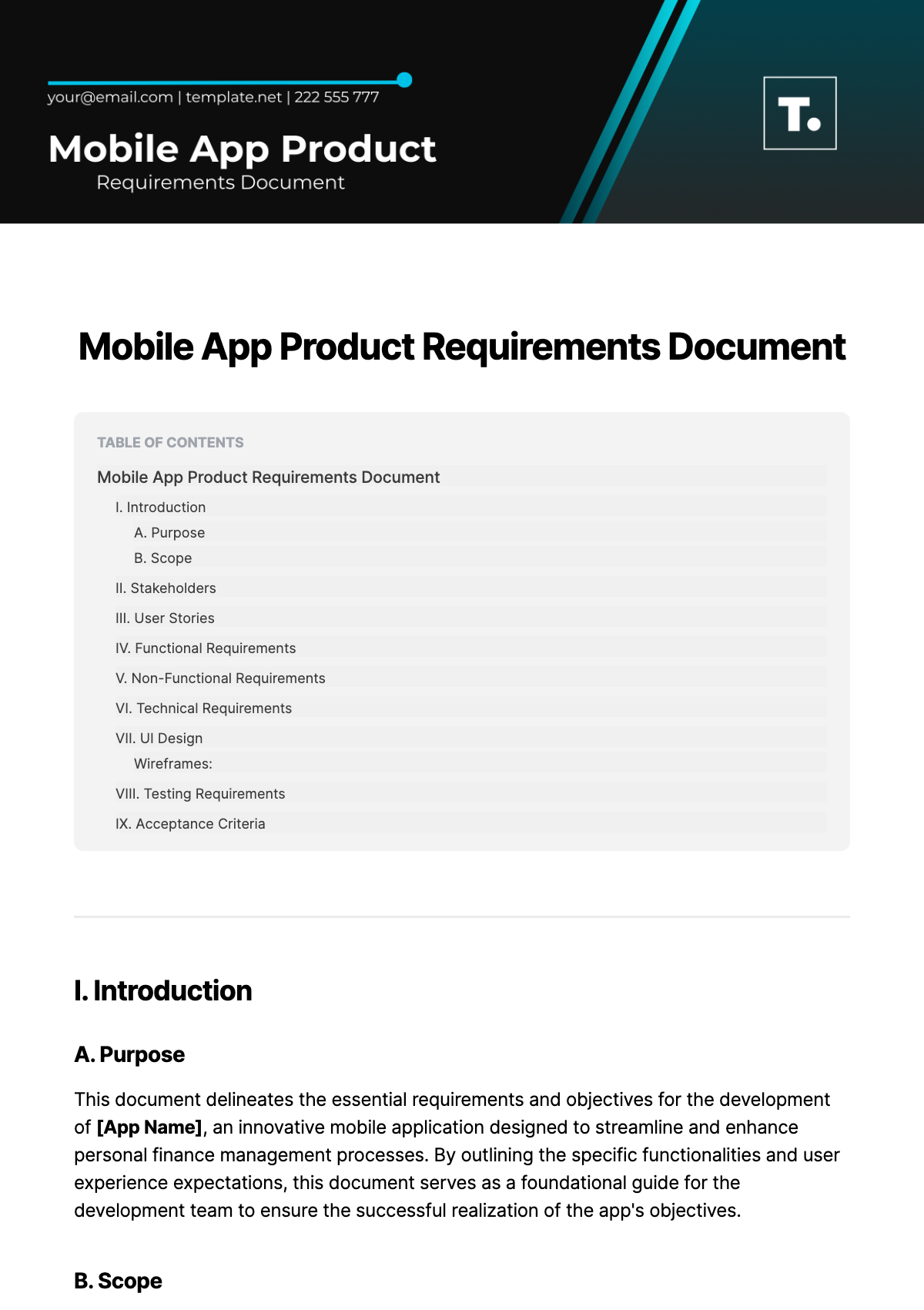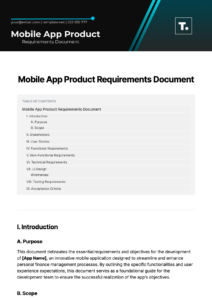Are you a business owner or a product manager looking to create a new mobile application? If so, it is crucial to have a well-defined mobile app requirements template to ensure the success of your project. This template will serve as a roadmap for your development team, helping them to understand the purpose, functionality, and technical specifications of your app.
By investing time in creating a comprehensive mobile app requirements template, you can minimize potential misunderstandings, reduce the risk of rework, and ultimately deliver a high-quality product that meets the needs of your users. In this article, we will provide you with a detailed guide to creating a mobile app requirements template that will set your project up for success. Let’s dive in!

Understanding the Purpose and Benefits of a Mobile App Requirements Template
A mobile app requirements template is a structured document that outlines the specific requirements for your mobile application. It serves as a single source of truth for all stakeholders involved in the development process, ensuring that everyone is on the same page and working towards the same goal.
A well-defined mobile app requirements template offers numerous benefits, including:
- Clear Communication: A template provides a shared language for all stakeholders, reducing misunderstandings and ensuring that everyone has a clear understanding of the project’s objectives.
- Improved Project Planning: A template helps you to identify and prioritize the most important requirements, enabling you to plan and manage your project more effectively.
- Reduced Risk of Rework: By clearly defining the requirements upfront, you minimize the likelihood of having to rework or redesign the app later in the development cycle, saving time and money.
- Enhanced Quality: A template ensures that all of the essential details are captured and considered, leading to a higher quality finished product.
- Faster Time to Market: By having a clear roadmap, your development team can work more efficiently and deliver the app to market faster.
Creating a Comprehensive Mobile App Requirements Template
To create a comprehensive mobile app requirements template, consider the following steps:
- Define the Project Objectives: Clearly state the purpose and goals of your mobile app. What problem does it solve? Who are the target users? What outcomes do you want to achieve?
- Identify User Stories: User stories are short descriptions of the features and functionalities that the app should provide from the user’s perspective. They help you to understand how users will interact with the app.
- Establish Functional Requirements: These requirements define the specific functionality that the app must have. They should be clear, concise, and testable.
- Specify Technical Requirements: These requirements outline the technical specifications of the app, such as the operating systems it will support, the programming languages it will be built with, and any specific hardware requirements.
- Include Non-Functional Requirements: These requirements cover aspects of the app’s performance, reliability, security, and usability.
- Review and Approve: Once you have completed the template, it is important to have it reviewed and approved by all relevant stakeholders to ensure that everyone is in agreement.
Additional Considerations for a Successful Mobile App Requirements Template
In addition to the steps outlined above, consider the following tips to enhance the effectiveness of your mobile app requirements template:
- Use Standard Templates: There are numerous industry-standard templates available online that you can use as a starting point.
- Involve Stakeholders: Collaborate with all stakeholders, including users, developers, and business analysts, to ensure that the template captures all necessary requirements.
- Prioritize Requirements: Use a prioritization technique, such as the MoSCoW method, to identify the most important requirements.
- Keep it Concise: The template should be comprehensive but concise, focusing on the essential details.
- Review Regularly: Requirements can change over time, so review and update the template as needed.
Conclusion
A well-structured mobile app requirements template is a valuable tool that sets the foundation for a successful mobile app development project. By following the steps outlined in this article and considering the additional tips provided, you can create a template that will guide your development team, ensure clear communication, reduce the risk of rework, and ultimately deliver a high-quality app that meets the needs of your users.
Remember, the mobile app requirements template is not just a document; it is a roadmap that will accompany your project throughout its lifecycle. By investing time in creating a comprehensive template, you are investing in the success of your mobile app.

